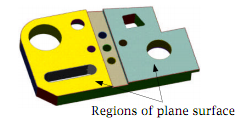SEOUL, Korea – 3D Systems has a vision that involves streamlining the scan-to-print workflow. But does anybody actually do that? Scan an object, maybe make some modifications, and then not long after print it out?
Tom Charron, VP of marketing and product management at Rapidform, 3D Systems’ newest acquisition, said there’s one piece he can confirm: “The same customers who are buying scanners are buying printers.” Charron said that’s where Rapidform and 3D Systems first started seeing each other in the marketplace: 3D Sysetms had bought Z Corp, Z Corp had been OEMing the Creaform handheld scanners, and many people were using Rapidform to work with the scan data.
The same resellers selling Z Corp scanners were now also selling Z Corp/3D Systems printers and finding customers who wanted both. Those working in the reverse engineering, rapid prototyping and manufacturing space see the value of both the scanner and the printer.
“It’s not always the case that they’re being used together today,” though, Charron said. “A lot of the time the scanner is sitting near the printer, but it’s not like everybody is doing the whole ‘3D copy machine.’”
“Part of that,” he continued, “is because it’s not well integrated today. It’s been a bunch of different independent companies making all the different pieces of that today.”
So, with the purchase of Rapidform, we should expect that to change, right? Scan-to-print will be a half-hour workflow soon, tops, right?
Well, 3D Systems is a public company and not in the business of discussing future product releases, but if you look at what’s unique about Rapidform, it’s not hard to see where things might be going.
Rapidform “allows one to take scan data and open it directly in a CAD environment,” 3D Systems CEO Abe Reichental told investors in explaining the acquisition, “which no one else currently can do.”
Charron said that’s the truth. He said Rapidform’s XOR software product is unique in that, by licensing the Parasolid kernel from Siemens PLM like many of the leading CAD software packages (MicroStation, SolidWorks, Vectorworks, etc.), users can create actual parametric CAD solids right in the same environment where they import the scan data. That allows users to not just work in surface meshes, but in solids with mass.
“Inside Rapidform, you can actually make a solid extrude,” Charron said. “It knows a hole is a hole and not just a place without geometry … the model that’s made up only of surfaces isn’t feature aware.” Geomagic COO Tom Kurke confirmed that Rapidform is unique in this way.
If you’re looking to create a world where you’re scanning something and then modeling it in a way where your end goal is printing something out, with a variety of materials available to you, being able to solid model might be handy. Both Rapidform and Geomagic, for example, can export projects begun with scanning fairly easily into a variety of CAD platforms, but someone who is not a trained CAD modeler, or doesn’t own a separate CAD package, could find Rapidform’s software – or an iteration of it developed further in conjunction with new owners 3D Systems – easier for getting to the print phase. (For a full discussion of the scan-to-parametric-model workflow, see here.)
“We think Rapidform is the perfect puzzle piece to fit in with what we’ve been building,” said 3D Systems VP of global marketing Cathy Lewis, just after telling me there will be no talk of potential future products. “What we’re working on now is getting everyone cross-trained on what the benefits are of this software, etc., and making sure we’re optimizing the opportunity in the near term. There will be lots of opportunity for new products after that.”
You mean, like a combo of the Hypr3D photogrammetry product and the Rapidform product that would allow you to go right from photographs to a point cloud in a CAD environment? Talk about a 3D photocopier…
“I don’t think there are too many people popping for $10,000 software to go with their free or cheap photo-to-model software,” laughed Charron. “We’re not seeing people use them together right now. But I think that’s in large part because of the packaging and the marketing of the products. What you’re actually doing with the data is all the stuff that’s inside of Rapidform today. You can fairly easily look at where we’ll be taking things.”
Similarly, “right out of the box, does Rapidform fit with Cubify?,” Charron asked rhetorically. “No. But you can see a lot of the pieces coming together. There’s going to be expanded breadth with where scanning and Rapidform fits in.”






